Understanding Nitrate Accumulation
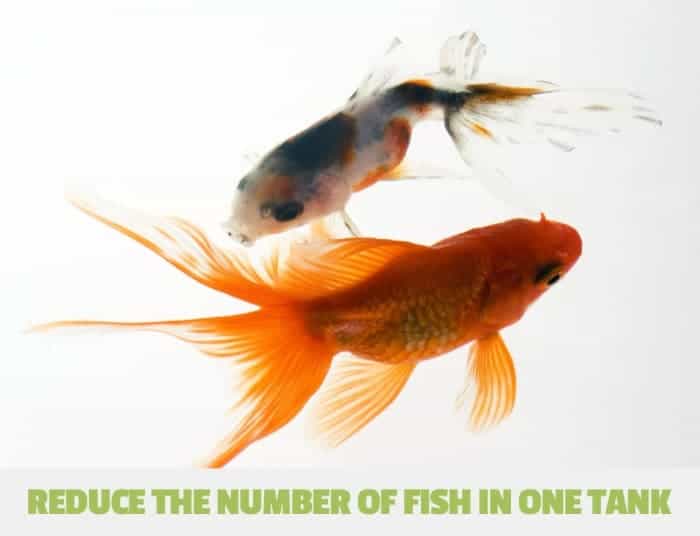
Nitrate buildup in aquariums is a common concern for fish keepers. Understanding the nitrogen cycle and the factors contributing to nitrate accumulation is crucial for maintaining a healthy and thriving aquatic environment. High nitrate levels can lead to significant problems for the fish and the overall ecosystem of the tank.
The nitrogen cycle in an aquarium is a natural process where ammonia, a toxic byproduct of fish waste and uneaten food, is converted into less harmful substances. This process is essential for maintaining a healthy aquarium environment.
The Nitrogen Cycle
The nitrogen cycle involves three key stages. First, ammonia is produced by fish waste and decaying organic matter. This ammonia is highly toxic to fish and other aquatic life. Second, beneficial bacteria convert ammonia into nitrite, which is also toxic. Finally, other beneficial bacteria convert nitrite into nitrate, which, while less toxic than ammonia and nitrite, still needs to be managed to maintain a healthy tank. This gradual transformation is crucial for maintaining a safe and balanced aquarium environment.
Nitrate Formation
Nitrates are formed as the final stage in the nitrogen cycle, where nitrifying bacteria convert nitrite into nitrate. This process happens naturally within the aquarium environment. The rate of nitrate formation depends on factors like the amount of fish waste and uneaten food in the tank. If there’s a surplus of organic material, the nitrifying bacteria will have a higher workload, leading to increased nitrate levels.
Causes of High Nitrate Levels
Several factors can contribute to elevated nitrate levels in aquariums. Overfeeding is a significant contributor; excess food provides more organic matter for the bacteria to convert into nitrates. Insufficient filtration is another common cause; inadequate filtration capacity may not effectively process the ammonia and nitrite produced. Similarly, infrequent water changes allow nitrates to accumulate in the tank water, and the removal of this accumulated nitrate is crucial to maintaining a healthy ecosystem.
Negative Impacts of High Nitrates
High nitrate levels can have detrimental effects on fish health. Elevated nitrates can lead to stress, reduced growth, and decreased immune function in fish. Furthermore, it can impact the overall health and balance of the aquarium ecosystem. Excess nitrates can cause algae blooms, which can further complicate water quality issues and reduce the aesthetic appeal of the tank. A stable and balanced ecosystem depends on managing these elements.
Filtration Methods and Nitrate Reduction
Different filtration methods vary in their effectiveness in reducing nitrate levels. The effectiveness of the filtration method is directly proportional to its ability to accommodate the biological filtration demands.
| Filtration Method | Effectiveness in Nitrate Reduction | Description |
|---|---|---|
| Mechanical Filtration (e.g., filter sponges, filter floss) | Low | Removes particulate matter, but doesn’t directly remove nitrates. |
| Biological Filtration (e.g., bio-media, filter cartridges) | Moderate | Houses beneficial bacteria that convert ammonia and nitrite into nitrate. Effectiveness depends on the surface area and maintenance of the bio-media. |
| Chemical Filtration (e.g., activated carbon, resins) | Low | Removes dissolved organic compounds, but doesn’t directly target nitrate. |
| Water Changes | High | Regular water changes are essential for removing accumulated nitrates from the aquarium. The frequency of water changes directly impacts the nitrate levels. |
Methods for Reducing Nitrate Levels
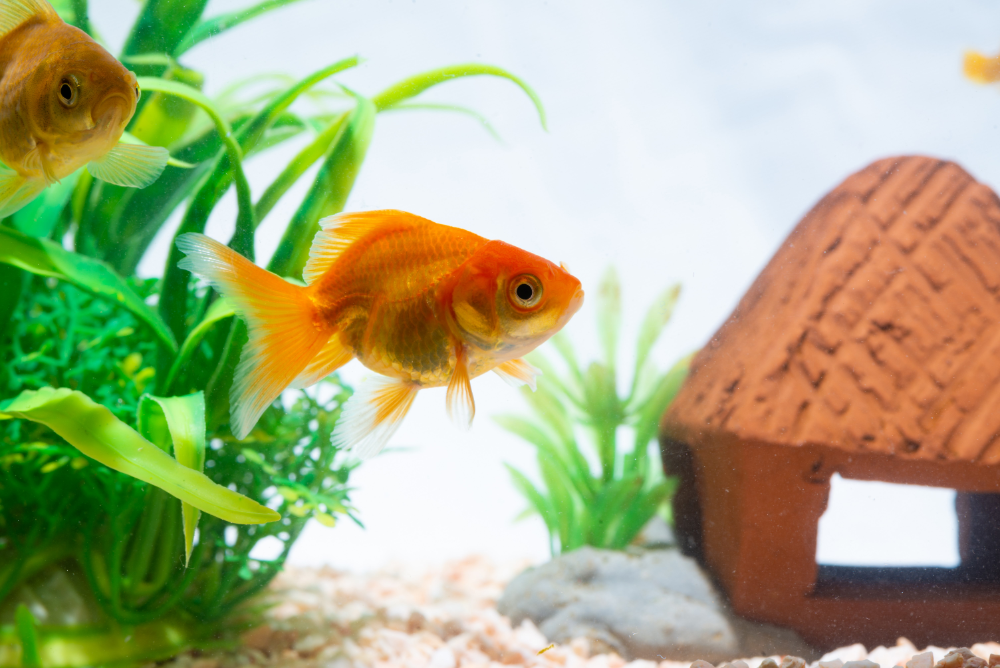
Nitrate accumulation in a fish tank can negatively impact the health of your aquatic inhabitants. Understanding the methods to effectively reduce nitrate levels is crucial for maintaining a thriving and healthy ecosystem. These methods range from regular water changes to the strategic use of aquarium plants and commercial nitrate removers. Implementing a combination of these approaches often yields the best results.
Nitrate reduction strategies are tailored to the specific needs of the tank and its inhabitants. Careful consideration of water change frequency, the choice of nitrate remover, and the appropriate planting density are vital factors to ensure a healthy and thriving aquatic environment.
Water Changes
Regular water changes are a fundamental aspect of maintaining a healthy aquarium. They effectively remove accumulated nitrates, preventing potential harm to fish and other inhabitants. The frequency and volume of water changes depend on various factors, including the size of the tank, the number of fish, and the filtration system’s efficiency.
A general guideline for water changes is to remove 25% of the tank’s water every 1-2 weeks. For smaller tanks with higher stocking densities, more frequent water changes might be necessary. A well-maintained filtration system and appropriate feeding practices will reduce the frequency needed. Using a gravel vacuum during water changes helps to remove excess debris and uneaten food from the substrate, further improving water quality. Proper water conditioning is critical to avoid harming the fish and ensure the water parameters are suitable for the fish.
Nitrate Remover
Commercial nitrate removers provide a direct approach to nitrate reduction. These products often contain specific compounds that bind to nitrates, removing them from the water column. Choosing the right nitrate remover depends on factors such as the tank size, the desired reduction rate, and the specific nitrate levels.
Following the manufacturer’s instructions is paramount when using a nitrate remover. The steps typically involve adding the specified amount of the remover to the tank, allowing it to work for the recommended duration, and then performing a water change to remove the treated water. Always ensure that the product is compatible with your tank’s inhabitants and environment. It is essential to understand that these products are not a substitute for regular water changes but can be a helpful supplement.
Using Aquarium Plants
Aquarium plants play a significant role in the nitrogen cycle. They consume nitrates as part of their growth process, thus helping to reduce nitrate levels in the tank. Different plant species exhibit varying degrees of nitrate absorption capacity. Choosing the right plants for your tank is crucial to ensure their effectiveness in nitrate reduction.
Adding a variety of aquatic plants, including those with fast growth rates, can significantly reduce nitrate levels over time. Proper lighting and nutrient balance are vital for plant growth and optimal nitrate absorption. Ensuring the plants have sufficient space to thrive is important. The presence of healthy plants adds visual appeal and enriches the aquatic environment.
Nitrate Remover Comparison Table
| Product | Effectiveness | Cost | Ease of Use |
|---|---|---|---|
| Example Product A | High | Medium | Easy |
| Example Product B | Moderate | Low | Medium |
| Example Product C | Low | High | Difficult |
Note: Effectiveness, cost, and ease of use are relative and may vary based on individual experiences and tank conditions.
Water Change Strategies
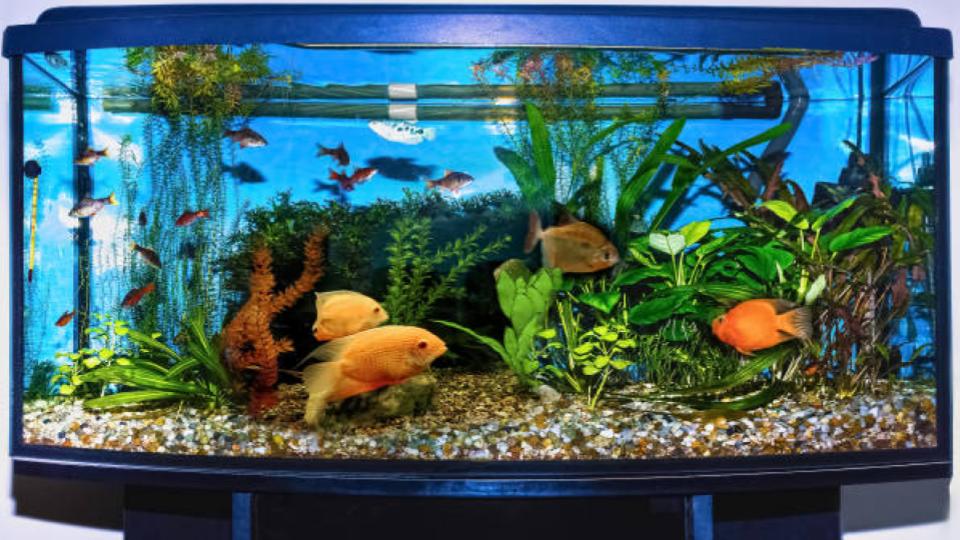
Regular water changes are crucial for maintaining a healthy aquarium environment, particularly when managing nitrate levels. Proper water changes dilute accumulated waste products, including nitrates, and replenish essential elements vital for fish health. This process helps prevent the buildup of toxins and promotes a stable, balanced ecosystem within the tank.
Importance of Regular Water Changes
Regular water changes are vital for maintaining optimal water quality in an aquarium. They remove accumulated waste products like nitrates, ammonia, and nitrites, preventing their buildup to toxic levels. Furthermore, water changes replenish essential minerals and trace elements that fish require for proper growth and health, contributing to a stable and healthy ecosystem.
Optimal Frequency and Volume
The optimal frequency and volume of water changes depend on various factors, including tank size, the number of fish, and the filtration system’s efficiency. Larger tanks and tanks housing a greater number of fish require more frequent water changes compared to smaller tanks with fewer inhabitants. A well-maintained filtration system can reduce the frequency of water changes needed.
- Small tanks (10-20 gallons): Weekly water changes of 25-50% are generally sufficient.
- Medium tanks (20-50 gallons): Bi-weekly water changes of 25-50% are usually adequate.
- Large tanks (50 gallons and above): Bi-weekly or monthly water changes of 25-50% can effectively maintain healthy nitrate levels.
A general rule of thumb is that more frequent, smaller water changes are preferable to less frequent, larger ones, as they create a less stressful environment for the fish. These small, frequent changes also make it easier to detect and address any potential water quality issues sooner.
Steps in Performing a Safe Water Change
Safe and effective water changes involve several crucial steps to minimize stress on the fish. Gradual water changes are especially important to prevent shock.
- Prepare the new water: Use a water conditioner to remove chlorine and chloramines. Allow the water to reach room temperature, matching the existing tank water temperature, before use.
- Gradual water changes: Introduce the new water gradually, replacing only a portion of the existing water each time. This method is essential to avoid drastic shifts in water parameters, which can be stressful for fish.
- Use a siphon or gravel vacuum: This is beneficial in removing any accumulated debris or waste from the substrate. This ensures a more thorough cleaning and helps maintain water quality.
- Monitor water parameters: After the water change, monitor the nitrate levels to ensure they are within a safe range. Test the water parameters regularly to ensure proper levels are maintained.
Comparing Water Change Schedules
The following table provides a comparison of the effects of different water change schedules on nitrate levels. It highlights how a more frequent water change schedule results in lower nitrate levels.
| Water Change Schedule | Nitrate Levels (ppm) | Fish Stress Level |
|---|---|---|
| Weekly 25% | ~20-30 ppm | Low |
| Bi-weekly 25% | ~30-40 ppm | Moderate |
| Monthly 50% | ~40-50 ppm | High |
Safe Introduction of New Water
To minimize stress on the fish, introduce the new water gradually. Use a siphon or gravel vacuum to carefully remove a portion of the existing water and replace it with the new, conditioned water. This gradual process prevents sudden changes in water parameters, which can be stressful for fish. Maintaining a consistent water temperature is critical to minimize stress on the fish during the water change process.
Nitrate Remover Products: How To Lower Nitrates In Fish Tank
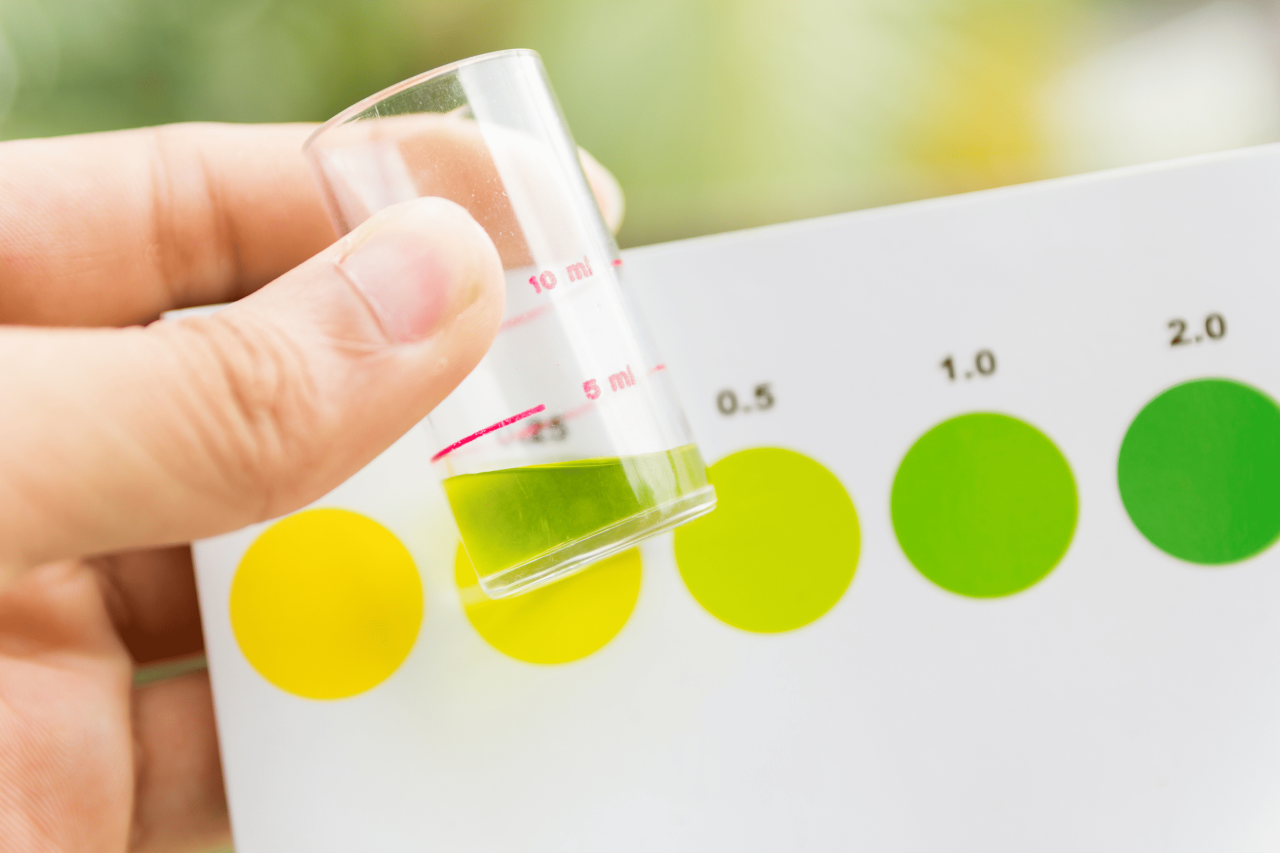
Nitrate removers offer a targeted approach to managing nitrate levels in aquariums, particularly when water changes are insufficient or impractical. These products, often designed for specific aquarium setups, can provide a more rapid and controlled reduction in nitrate levels compared to other methods. However, their effectiveness and cost-efficiency vary significantly, necessitating careful consideration.
Types of Nitrate Removers
Nitrate removers come in various forms, each employing distinct mechanisms. Understanding these mechanisms is crucial for selecting the appropriate product for a given aquarium environment. Common types include biological filters, chemical media, and resins. Biological filters, for example, employ beneficial bacteria to convert nitrates to harmless nitrogen gas.
Working Mechanisms of Nitrate Removers
The efficacy of nitrate removers hinges on their ability to remove nitrate ions from the aquarium water. Chemical media, such as activated carbon or resins, often employ ion exchange mechanisms. These media possess charged sites that attract and bind nitrate ions, effectively removing them from the water column. Biological filters, conversely, use specific bacteria to facilitate the conversion of nitrates to nitrogen gas through a process called denitrification.
Effectiveness Comparison and Cost
The effectiveness of nitrate removers varies based on factors like the volume of the aquarium, the concentration of nitrates, and the specific type of remover. Chemical media can be highly effective for moderate nitrate levels, but their capacity can be limited. Biological filters, on the other hand, can be more sustainable in the long term, but their efficiency can be slower. The cost of these products also varies significantly, with biological filters typically costing more for comparable volume capacity than chemical media. A detailed analysis of the specific characteristics of each product will be required to determine the most suitable option for a particular setup.
Pros and Cons of Nitrate Removers
| Nitrate Remover Type | Pros | Cons |
|---|---|---|
| Biological Filters | Sustainable long-term solution, potentially reduces other pollutants, promotes a healthy biological balance. | Can be slower to reduce nitrate levels compared to chemical media, may require a larger footprint. |
| Chemical Media (e.g., resins) | Can quickly reduce nitrate levels, often compact design. | May not be sustainable in the long run, potentially require replacement, may not address other water parameters. |
Selecting the Appropriate Nitrate Remover
The choice of nitrate remover depends on various factors. Consider the size of the aquarium, the current nitrate level, the desired reduction rate, and your budget. For a small aquarium with relatively high nitrate levels, a chemical media remover might be a suitable, cost-effective option. A larger tank with consistent high nitrate levels might benefit from a biological filter. In situations where maintaining optimal water quality is paramount, a combination of strategies might be the best approach.
Role of Aquarium Plants
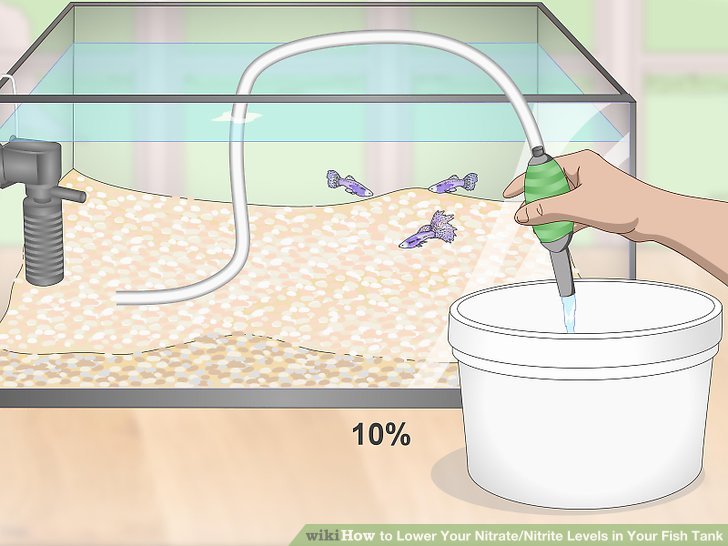
Aquatic plants play a crucial role in maintaining a healthy and balanced aquarium environment. Beyond their aesthetic appeal, they contribute significantly to water quality parameters, including nitrate reduction. Their ability to absorb nitrates from the water column effectively reduces the potential for algal blooms and promotes a thriving ecosystem.
Effective nitrate reduction relies on the symbiotic relationship between aquatic plants and the aquarium environment. Plants, through their biological processes, utilize nitrates as a nutrient source for growth and development. This nutrient uptake directly impacts the overall nitrate levels in the aquarium, contributing to a healthier water quality.
Nitrate Absorption Mechanisms
Plants absorb nitrates through specialized structures and processes. Nitrate uptake often involves a series of enzymatic reactions, where nitrates are converted into usable forms of nitrogen, such as ammonia, which is then incorporated into the plant’s tissues for growth. The rate of absorption depends on factors like light intensity, nutrient availability, and the species of plant. Plants that thrive in well-lit environments generally exhibit higher nitrate uptake rates.
Common Nitrate-Absorbing Aquarium Plants, How to lower nitrates in fish tank
Several aquatic plants are known for their substantial nitrate absorption capabilities. These plants provide both ecological and aesthetic benefits to the aquarium ecosystem.
- Anubias species (e.g., Anubias barteri, Anubias nana): These slow-growing, low-maintenance plants are highly effective at absorbing nitrates. Their resilience and adaptability make them a popular choice for aquascaping and nitrate control.
- Java Moss: This prolific, carpet-forming moss demonstrates remarkable nitrate absorption. Its rapid growth rate and ease of maintenance make it a valuable tool for reducing nitrate levels, especially in densely planted tanks.
- Hornwort (Ceratophyllum demersum): This fast-growing, free-floating plant is a potent nitrate remover. Its rapid growth rate and extensive root system enable efficient nitrate uptake, making it an effective addition to nitrate-rich tanks.
- Water Sprite (Ceratopteris thalictroides): This free-floating plant displays rapid growth and a high nitrate absorption capacity. Its aesthetic value and efficiency make it a suitable choice for nitrate control, particularly in well-lit environments.
Plant Selection and Placement for Nitrate Reduction
Strategic plant selection and placement can significantly impact nitrate reduction within an aquarium. The density of planting and the species of plants used directly influence nitrate removal efficiency. Densely planted areas generally offer greater nitrate absorption potential. Moreover, the placement of plants should be carefully considered to ensure adequate light reaches the plant’s leaves, as this affects their ability to absorb nitrates. The light requirements of various plant species should be considered to ensure optimal growth and nitrate removal.
Nitrate Reduction Potential and Aesthetic Value of Aquarium Plants
The table below highlights the nitrate reduction potential and aesthetic appeal of several common aquarium plants. This information can assist in selecting suitable plants for an aquarium based on both nitrate control and visual appeal.
| Plant Species | Nitrate Reduction Potential (High/Medium/Low) | Aesthetic Value (High/Medium/Low) |
|---|---|---|
| Anubias barteri | Medium | High |
| Java Moss | High | Medium |
| Hornwort | High | Medium |
| Water Sprite | High | Medium |
| Amazon Sword | Medium | High |
Maintaining Healthy Nitrate Levels
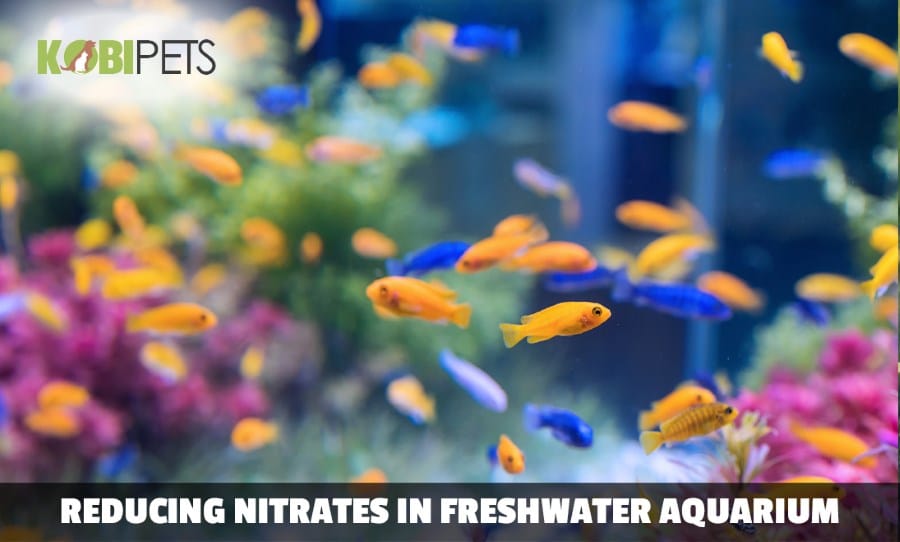
Establishing and maintaining optimal nitrate levels is crucial for a thriving aquarium ecosystem. Consistent monitoring and proactive management are key to preventing harmful spikes and ensuring the well-being of your fish and invertebrates. This involves understanding the factors influencing nitrate accumulation and employing strategies to keep these levels within a healthy range.
Maintaining a stable environment is vital for the long-term health of your aquarium. This encompasses not only the water parameters but also the balance between the various inhabitants and the biological processes occurring within the system. Proactive measures are more effective than reactive ones in preventing issues.
Long-Term Strategies for Optimal Nitrate Levels
Maintaining a stable nitrate level requires a multifaceted approach. Regular water changes, the use of appropriate filtration, and the presence of beneficial bacteria play a crucial role in this process. The right balance between these elements ensures a healthy and sustainable environment for your aquatic pets.
- Regular Water Changes: Scheduled partial water changes are essential for removing accumulated nitrates. A consistent schedule, even if it’s a small percentage each week, helps to keep nitrates from building up to harmful levels. A 25% water change every 2 weeks is a good starting point, but adjustments might be needed based on your specific tank setup and the fish population. A smaller, more frequent water change is often more effective than one large change.
- Effective Filtration: Proper filtration is paramount. Ensure your filter is functioning optimally and replacing filter media when necessary. A well-maintained filter helps maintain the balance of the aquarium’s ecosystem. Different filter types have varying capacities, so selecting one that’s suitable for your tank size and fish population is important. Consider the amount of biological filtration provided, along with mechanical and chemical filtration capabilities.
- Balanced Fish Population: Overstocking can lead to excessive nitrate production. Maintaining a fish population appropriate for the tank size is critical for preventing nitrate buildup. Overcrowding leads to increased waste, directly impacting nitrate levels. Carefully consider the size and needs of each fish species when planning your tank’s inhabitants.
Monitoring Nitrate Levels
Regularly testing nitrate levels is essential for maintaining a healthy aquarium. This allows you to quickly identify potential issues and take corrective actions before they negatively impact your fish.
- Using Test Kits: Invest in a reliable nitrate test kit. Testing should be done at least once a week, or more frequently if you suspect a problem. The frequency of testing is dependent on the specific conditions of the aquarium.
- Understanding Test Results: Become familiar with the range of acceptable nitrate levels for your specific fish species. This will help you determine if adjustments are needed to your maintenance routine. Different fish species have different tolerance levels to nitrate.
Preventing Future Nitrate Spikes
Proactive measures are essential for preventing future nitrate spikes. Understanding potential causes will allow you to address issues before they escalate.
- Avoiding Overfeeding: Feed your fish only the amount they can consume in a few minutes. Leftover food decomposes, contributing to nitrate production. Following a feeding schedule can prevent overfeeding, a common cause of spikes.
- Regular Maintenance Schedule: A consistent maintenance schedule ensures that your aquarium remains balanced. A regular schedule will also aid in identifying potential problems early. This includes cleaning filters, performing partial water changes, and maintaining appropriate water parameters.
- Addressing Biological Filtration: Ensure that your biological filtration is functioning correctly. A healthy bacterial colony is crucial for breaking down waste products. This prevents the buildup of harmful substances. The filter needs to be cleaned and maintained regularly to ensure the proper functioning of the biological filtration.
Maintaining a Balanced Aquarium Ecosystem
A balanced ecosystem is crucial for a healthy aquarium. It encompasses not only the water parameters but also the interactions between the various components of the tank.
- Plant Selection: Adding appropriate plants can help absorb nitrates and contribute to a healthier ecosystem. The right type of plant can help manage nitrates and improve water quality.
- Regular Maintenance Routine: A consistent routine ensures the health and stability of the aquarium environment. This routine includes regular water changes, cleaning, and testing.
Troubleshooting High Nitrate Levels
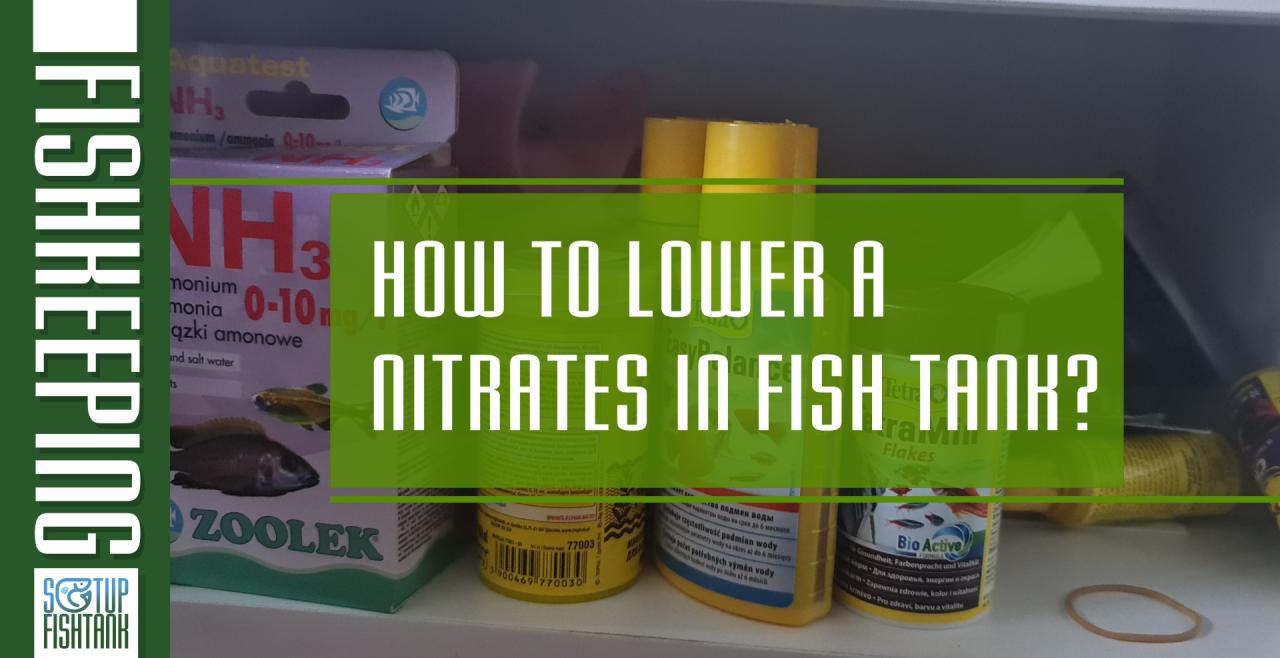
Maintaining optimal nitrate levels in a fish tank is crucial for the health of your aquatic inhabitants. Sudden spikes can indicate underlying issues, and prompt action is essential to prevent harm. Understanding the potential causes and implementing appropriate troubleshooting steps is key to maintaining a thriving aquarium environment.
Common Causes of Nitrate Spikes
Nitrate spikes in a fish tank often stem from an imbalance in the nitrogen cycle. This delicate process involves the breakdown of organic waste, such as uneaten food and fish waste, by beneficial bacteria. Disruptions to this cycle can lead to a rapid increase in nitrate levels. Several factors can contribute to such disruptions.
- Overfeeding: Providing excessive food leads to more organic waste, which overwhelms the beneficial bacteria in the aquarium’s filter system, leading to a faster accumulation of ammonia and subsequently nitrates.
- Population Density: A higher fish population produces more waste, putting a strain on the nitrogen cycle’s ability to process it. This leads to a buildup of nitrates. Consider the bioload (the amount of waste produced by the fish) relative to the tank’s size and filtration capacity when stocking.
- Inadequate Filtration: A filter that’s too small or not functioning effectively will struggle to keep up with the waste produced by the fish, leading to an increase in nitrates.
- Poor Water Quality: Insufficient water changes remove accumulated waste products, allowing nitrates to build up. Regular water changes are essential to maintaining optimal water parameters.
- Bacterial Bloom: A sudden increase in the bacterial population can temporarily overwhelm the nitrogen cycle, leading to a short-term spike in nitrate levels. This is often a result of introducing a large amount of organic material or a sudden change in water conditions.
Troubleshooting Steps for Nitrate Spikes
Addressing nitrate spikes requires a systematic approach to identify and rectify the underlying issue.
- Assess the Tank’s Current Condition: Carefully examine the tank’s inhabitants, water parameters, and the filtration system. Look for signs of overfeeding, overcrowding, or unusual bacterial growth. Evaluate the overall cleanliness of the tank, noting any accumulated debris.
- Reduce the Bioload: If overstocking is suspected, consider removing some fish to reduce the overall waste production. This is a gradual process, not an immediate action.
- Improve Filtration: Ensure the filter is functioning correctly and has sufficient capacity for the current bioload. If needed, upgrade to a more powerful filter or use additional filtration methods like a protein skimmer (for saltwater tanks). Consider adding media to improve the filtration process.
- Increase Water Changes: Increase the frequency and volume of water changes to remove excess nitrates. This is a crucial step in managing elevated nitrate levels.
- Introduce Nitrate Removers: Nitrate remover products can help to quickly reduce elevated nitrate levels. However, this should be considered a temporary measure while addressing the root cause of the spike.
Identifying the Root Cause of Nitrate Spikes
Pinpointing the exact reason for a nitrate spike involves careful observation and analysis.
- Monitor Water Parameters: Regular monitoring of ammonia, nitrite, and nitrate levels helps to track changes and identify potential imbalances in the nitrogen cycle.
- Evaluate Feeding Habits: Assess the amount and frequency of feeding. Adjust feeding schedules and portions to reduce organic waste. Adjust feeding based on how much food the fish consume and how quickly it is eaten.
- Inspect the Filtration System: Check for clogs or blockages in the filter media. Regular maintenance is essential for efficient filtration. Inspect the filter media for clogging and replace it when necessary.
- Assess the Fish Population: Carefully consider the number of fish in relation to the tank’s size and filtration capacity. If overcrowding is suspected, consider rehoming some fish to a larger tank or a different tank.
Quick FAQs
How to lower nitrates in fish tank – What are the signs of high nitrates in a fish tank?
Signs can include algae blooms, fish loss, or general lethargy in the fish.
How often should I perform water changes to lower nitrates?
The frequency depends on tank size, fish population, and filtration. A general rule of thumb is 25-50% weekly, but more frequent changes may be necessary for heavily stocked tanks.
Can I use a gravel vacuum to remove nitrates?
No, gravel vacuums primarily remove debris and uneaten food. They won’t significantly lower nitrate levels.
Are there natural ways to reduce nitrates besides plants?
While plants are the most effective natural method, some beneficial bacteria can contribute to nitrate reduction in the long term.